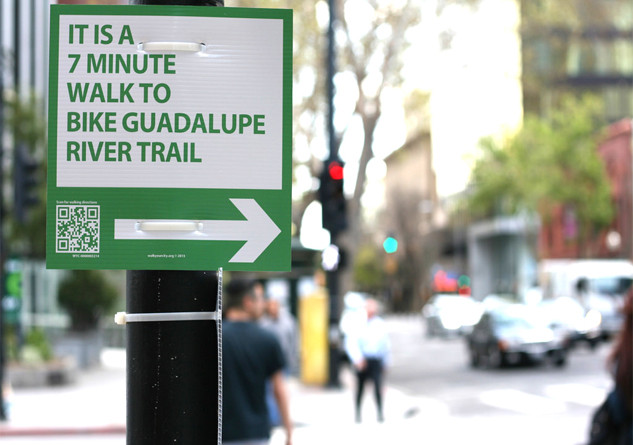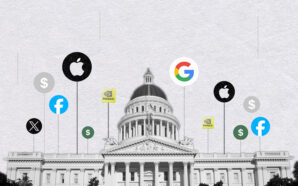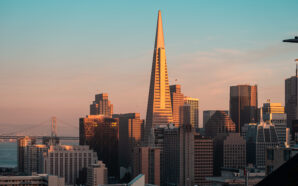Sam Liccardo/Mayor of San Jose
Facebook’s recent announcement of the development of “Terragraph” — launching a project in San Jose to distribute free, publicly-accessible, gigabit-speed outdoor wireless internet access — captured the attention of national media. To us in San Jose, though, it’s about more than a headline. This promising technology could help bridge the “digital divide” for thousands of our students, their families, and small businesses that today cannot afford internet access — let alone very high-speed gigabit service.
If it works.
Risk accompanies all innovation, but it’s not something that comes naturally to government. From City Hall to Capitol Hill, every mistake finds a headline, the spectacularity of which varies by the prominence of the mistake. Risk-taking public officials have varied traits, but their careers share a perilously short duration.
In San Jose, we recognize the imperative of embracing risk. We’ve launched a strategy to make San Jose an urban platform for testing and demonstrating the most impactful civic technologies to improve safety, services, and quality of life. This “demonstration city” concept comprises one of the five elements of the Smart City Vision that the Council approved in March. In doing so, we set a simple goal: to make San Jose the nation’s most innovative city by 2020.
While ambitious, this goal aligns with the DNA of our community, the 1 million inhabitants of Silicon Valley’s largest city. Evidence abounds that we live in the most innovative urban community on the planet; for example, the U.S. Patent and Trademark office issues more patents annually to San Jose residents, companies, and employees than any other city in the nation.
Innovation has become an imperative for major cities like San Jose, America’s 10th largest. Our fiscal challenges loom large. Although we’ve stabilized our budget for now, like most big cities, we face billions of dollars of legacy liabilities in everything from infrastructure maintenance to pension funds. With a fast-growing population and ever-growing demands for services and infrastructure, we simply cannot continue to deliver the same services in the same ways as the past.
With the Smart City Vision, we embark on a journey to leverage digital platforms, new technology, and creative ideas to reduce crime, reduce traffic congestion, or reduce greenhouse gas emissions. We’ll do so in part with the aid of many partners, including universities, foundations, companies, and most of all, engaged residents. We’ve created a more robust data portal with the help of partners ranging from “Code for San Jose” to Microsoft, and last week, our Council adopted an “open by default” data policy. We’ve created an analytics team and embarked on using data to reshape many familiar city services, from improving emergency medical response to park maintenance.
Our unique demonstrations and pilot projects, like Facebook’s, appear as a particularly compelling means to help us tackle the ordinary challenges of civic governance. For example, we lack the capital budget to retrofit our yellow sodium streetlights to safety-enhancing, energy saving LED “smart” lights. So, Phillips is piloting “smart poles” throughout our city, and paying for hundreds more retrofits, in exchange for being able to attach small cells to the poles to transmit data traffic. While Phillips generates lease revenue from cellular service providers, our residents get better cell coverage, our neighborhoods get safer lighting, and our taxpayers save money on energy.
Meanwhile, we’re working with industry-leading local companies like Cisco to explore applications for our short-range “virtual fiber lines” from our street infrastructure to vehicles via dedicated short-range communications (DSRC). By 2017, all cars manufactured in the U.S. will be required to have DSRC transmitters, allowing those vehicles to share information with the built environment. By connecting cars and street infrastructure through the fast-emerging “internet of things” (IoT), the city can better manage maintenance, traffic congestion, and safety improvements.
We’ve also come to recognize the increasing need for data security within these IoT networks, to protect us from those who could use this data for harm. In partnership with Silver Spring Networks, we’re launching an IoT wireless network, “Starfish,” to enable data transmission with bank-level security across an entire city. As one of three North American cities launching the “Starfish” initiative, we hope to accelerate the use of sensor technology to address a host of issues, from traffic congestion management to safety. We’re also establishing a platform for future IoT innovation and entrepreneurship by providing free access for low-volume users.
San Jose will become the City of the Future by relying on partnerships like these to address growing demands in an environment of scarcity. We’ll need to also reach out more deeply within our innovative community. Early next month, we’ll be launching “Unleash Your Geek,” a series of challenges to our community to solve vexing civic problems. This isn’t your typical caffeine-fueled, one-day-stand hack-a-thon. Rather, we’re looking to engage bright students, residents, and the tech community in more serious problem-solving. With the support of partners like the Silicon Valley Community Foundation, we’re funding efforts to create and demonstrate prototypes. (And, if you’ve got civic challenges around which we can convene local innovators, just use the hashtag #HeySam to tweet or post your idea, and we’ll steal it!)
Will any of this work? We don’t know — that’s the inherent risk of an innovation agenda. It’s a risk that U.S. cities increasingly must take, however — the challenges of growth, urban problems, and fiscal constraints compel us to reimagine how we serve our communities. And with the help of some of the world’s most generative minds and ambitious spirits, I like our chances. Follow Sam Liccardo on Twitter: www.twitter.com/sliccardo






